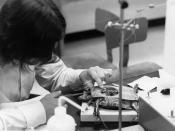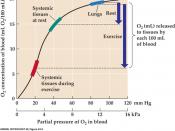Exercise Physiology: Uncovering the Underlying Mechanisms of the Cardiovascular System, Respiratory System and Skeletal Muscle During Exercise.
Biology 362: Animal Physiology
Abstract The students of the Bio 362 lab used their knowledge of physiology, and with the help of Dr. Baur applied it to exercise. Three different tests were done, Bod Pod, VO2 max, and Wingate power test. 6 students participated in the Bod Pod. The 3 female students had an average body fat percentage of 26% while the males had an average body fat of 17%. The females had an average lean body mass of 74% and the males had an average of 83%. Two students performed the VO2 max test. Zach had a VO2 max of 50.1 ml/kg/min and Katie had a max of 47.61 ml/kg/min. The Wingate power test also had two participants. Collier produced a maximum power output of 877.2 W with a drop of 57.7
% over the thirty second test. Ashley produced a maximal power output of 433.62 W with a drop of 42.6 %. Using the data, students concluded that VO2 maxes are directly connected to cardiovascular, respiratory, and skeletal muscle health. Also they were able to break down the different roles of metabolism during exercise. Finally, they compared power output results from Collier and Ashley to national averages as well as each other.
Introduction
Exercise physiology is the study of the biological mechanisms that are activated in response to physical activity and their effect on the body as a whole. By using state of the art technology, it is possible to measure different parameters pertaining to the body during exercise. Gathering this data, allows a physiologist to determine the overall physical condition of an individual. This practice is common for many division one athletes as well as elite, professional athletes looking to...


